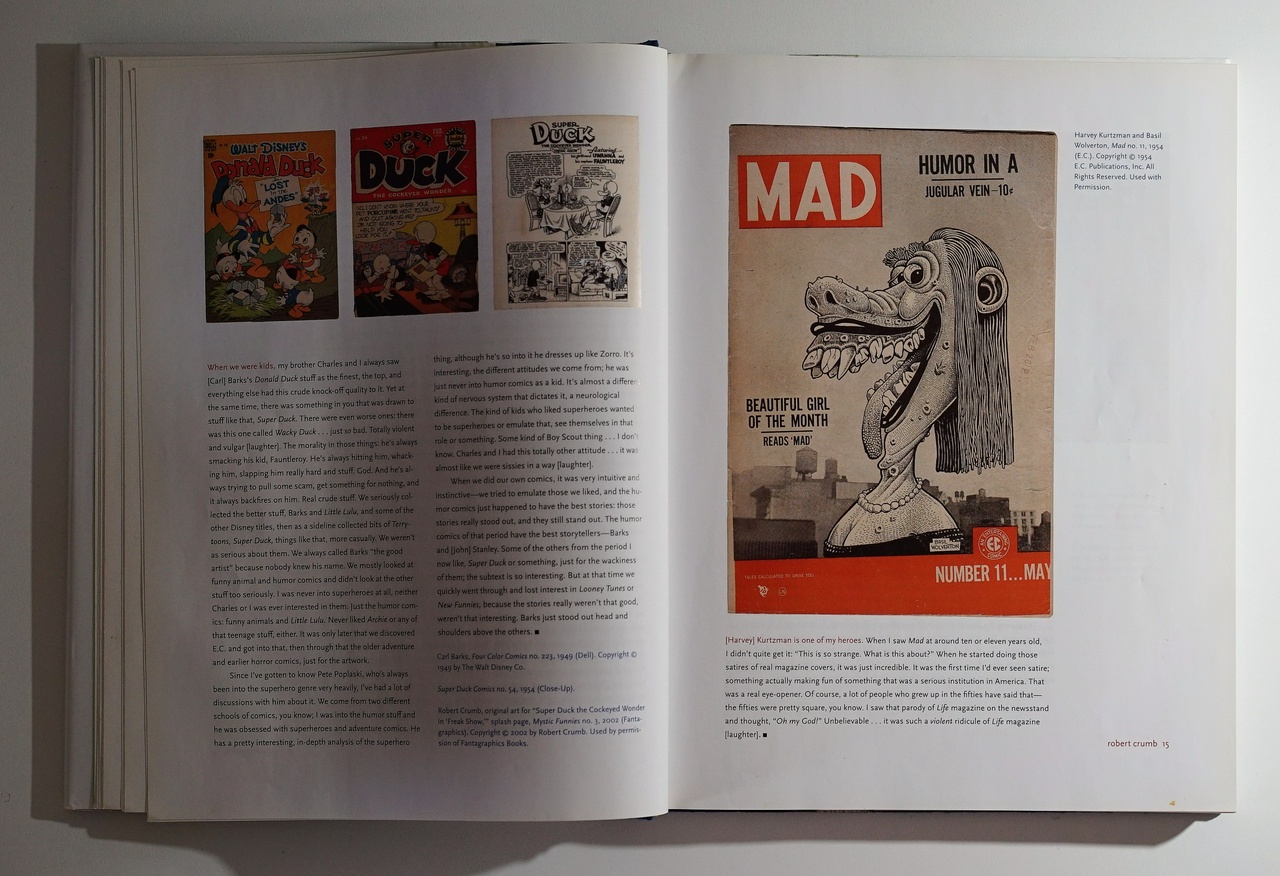In the Studio: Visits With Contemporary Cartoonists
by Todd Hignite
o-o-o-c

I'm of two very contradictory minds when it comes to this one. On one hand, it's a very important survey of America's most celebrated alternative cartoonists, and on the other hand it's kind of disappointing. Feelings of disappointment may pertain to me and me alone and may not in any way be objective in relation to the book's content at all. It probably has much to do with my expectations going into the book, expectations that manifested on the basis of the book's title (“In the Studio”). Was I wrong to expect at least a peek into these cartoonists' workspaces? Was I wrong to expect copious amounts of craft talk and process stuff? We end up getting neither, hence the severe feelings of disappointment I cannot seem to shake off. With that being said, we do get into the cartoonists' heads quite a bit, along with a looksee at upbringing and early influences, both of which I find wholly insightful. Hense, the book's importance.
 (please excuse the shit lighting on these pix)
(please excuse the shit lighting on these pix)
The cartoonists in question are: Robert Crumb, Art Spiegelman, Gary Panter, Charles Burns, Jaime Hernandez, Daniel Clowes, Seth, Chris Ware, and Ivan Brunetti. So really, a who's who of the creme de la creme of working alternative cartoonists. If you know these artists' work well though, chances are none of the work by them featured and discussed in this here tome will offer any new insight. What this book does really well though is showcase all the material they cite as influences and allow them to talk about it at length, which very few interviews get to do. I've always been keen to look at the work that influenced my influences, so that aspect of the book I find to be wholly invaluable. Crumb talks at length about obscure working-class satire magazines dating back to the 1800s, along with early MAD and Carl Barks' Donald Duck comics and Thomas Nast's work for Harper Weekly. When you see his own work laid out next to those works, it really does begin to look like a natural mélange of the stuff. Spiegelman cites old Sunday strips, Harvey Kurtzman, art nouvea, Otto Nuckel's “picture novel” from the 1930's, and uncovering “weird” comic books like Fletcher Hanks' STARDUST. And it's like this for every cartoonist's profile, with pictured samples from all their influences (although sometimes the images can be quite small), so again: a truly invaluable survey in that particular regard.




But I'm still aghast that a book titled “in the studio” wouldn't include a single studio shot pertaining to any of the featured cartoonists. And virtually nothing whatsoever on their preferred tools and approach to making the stuff they make. Even when they do actually talk about the stuff they make, it's about theme and general circumstances and the stuff you might find in any interview surrounding the work but nothing whatsoever on the process of actually making it. Where exactly is the studio aspect of “in the studio”? Despite how invaluable the book is for other reasons, I still feel cheated. Had it been called “Conversations with Contemporary Cartoonists” or some such, I likely would've expected exactly what I got and been completely satisfied with it.